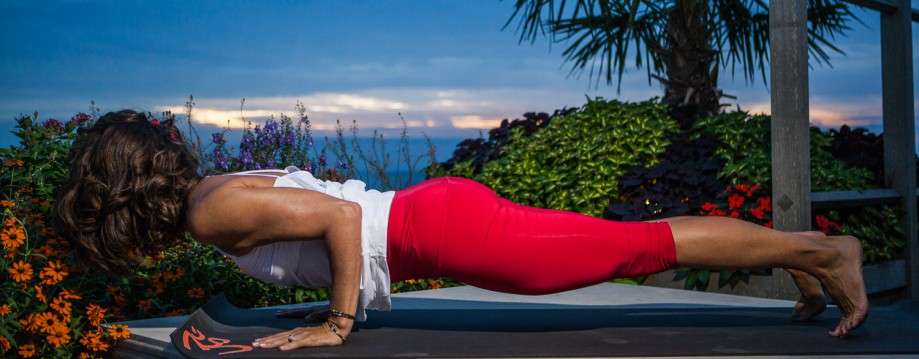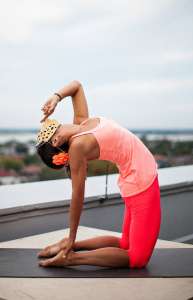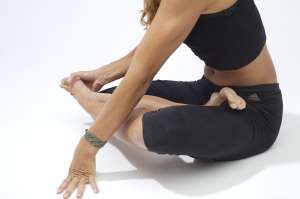If patience were for sale, would you stand in line to buy some? How much would you want? How do you think they would be selling it, by the hour? Personally I have found my patience level is directly related to how much something is inconveniencing ME. Damn ASMITA – ego! My ego you can make me such a terrible person sometimes. I am usually forced into becoming patient after I have done something stupid while trying to out smart my impatience. Like the proverbial speeding ticket, as you’re speeding to get where you need to be you end up getting pulled over. Naturally, you end up getting where you needed to be, but later. Or how about how your impatience makes you push aggressively against every warning sign your body is giving you, and you injure yourself trying to get one more yoga asana in the “I can do that pose” pile. Which then sets you back weeks from actually being able to do that pose. Do you recognize any of these scenarios? If so, then fall in line behind me for your fare share of patience. It’s marked down to $9.99 a hour! Would you pay that? Either way, you’re going to pay. If you don’t find a little more patience in your life.
I have stuck with Ashtanga yoga for 13 years. The number of poses that haven’t come easy for me out weigh the ones that have. My husband says I’m a diesel. What he means is, I am good at long and slow distances when it comes to running. What I think he really means to say is I am willing to suffer as long as necessary to get something that I really want. What I have come to realize is that I like rubbing myself up against discomfort to find out just how much of it I can really handle. This personality trait works really well with Ashtanga yoga, because there are poses that seem strategically placed to weed out people who can’t handle the discomfort. For all the poses that could scare me off I usually just dig in even harder. I find I am incredibly patient when things are difficult, but terribly impatient in the most mundane moments of my life, like walking my dog.
I think I have the Ganesha spirit inside of me. Ganesha is all about overcoming obstacles. When yoga throws a pose at me that seems illogical to my body, I just trumpet out “Oh yeah, watch me!” then I take another deep breath and carry on. In my practice I have come up against Marichyasana D, Baddha Konasana, pashasana, kapotasana, dwi pada sirsasana and a few others. Here’s what I can tell you about these asanas. Don’t give up, and don’t think they will come quickly. Marichyasana D took me 3 years to bind. Baddha Konasana took me 10 years to get my forehead to the floor and knees down. Pashasana has taken me 13 years on my left and is still a tad elusive on my right. Kapotasana took me 7 years just to touch my toes, and dwi pada sirsasana only happens for me as Yoginidrasana, because of a herniated L5/S1. Even with a consistent 6-day-a-week practice these poses have taken a long time to come around. So why should we do yoga for ten years just to get our forehead down to the ground? What’s the point?

Baddha Konasa. Years of running made this pose a practice of patience.
The point is, if I don’t walk away from challenges in yoga then it’s likely I won’t walk away from other challenges life throws my way. The point is, I now have a sense of pride every time I execute those postures. No one but me made them happen. But put these things aside and ask a different question. Why would I walk away when I have no ability to predict when I will be able to do these postures? If I would have put a time limit on my yoga practice; that, if these things don’t happen for me in a year then I’m walking away. Who’s to say that the day after I walk away it wouldn’t be the day my hands clasp, or my head touches the floor. I feel there is a greater risk in walking away than there is in seeing it through. Walking away will always leave me with regrets, but seeing it through is like turning the door knob of opportunity. Walking away is like never even ringing the doorbell of opportunity. Sure I have regrets from things I didn’t walk away from sooner, but they are always overshadowed by all that I am proud of myself for NOT walking away from.
Why not walk away from Ashtanga yoga when the going gets tough? When I did bind in marichyasan D no-one dropped party streamers and brought me a cake. No-one read about it in People Magazine. The interest rate on my visa card didn’t drop, the bills in my mail box didn’t go away, the dog I wish would live forever didn’t suddenly defy nature and survive her cancer, and my boss didn’t call me into her office and say “I hear you bound Marichyasana D last night. Congratulations, here’s your new office and a $5,000 raise.” So what is all the hard work for if it didn’t get me any of those things? But keep in mind what I did get…pride. How much is pride worth and would you stand in line to buy some? Do you think buying pride would feel the same as earning it? If two lines were forming one selling pride, and another selling patience which line would you stand in?
Pride is like food for our spine. It pulls your shoulders back, and you seem to stand a little taller. Especially if it came from sweat and hard work. The pride I gain from overcoming one difficult asana gives me fuel to over come the next, and the next after that. I think pride is what gives our eyes that little twinkle. Look into an ashtangi’s eyes after their practice, you’ll see that twinkle. I think pride settles our heart, and it strengthens our convictions. It is limitless in all that it gives. The beauty of pride is it best earned with patience. Patience is the real hero. Its sort of like how your body makes a shadow; patience shines a light on areas that are weak. As you work through those areas you get stronger and then can do more. Pride is just the after effect of your patience.
I love those moments where the Universe laughs at me for thinking I have control over all that’s around me. When the ego boast the “ME! ME! ME!” cry and all you’ll end up hearing is the Universe laughing. The ego may drive you to want more asanas, but sooner or later the ego becomes weak. What takes over when the ego walks away…the heart. Its inside the heart that patience lives. Don’t be afraid to let hard work pay off and to see things through. There will be no party, and probably no checks will be written, but there will be a sense of great pride. Pride like that can make you feel as strong as an elephant. Hopefully that elephant like feeling you experience is Ganesha pointing out to you that you are overcoming obstacles. So, put away your wallet because patience can not be bought. But I promise you, if you don’t find some you will end up paying for it.

Patiently moving into Kapotasana.


